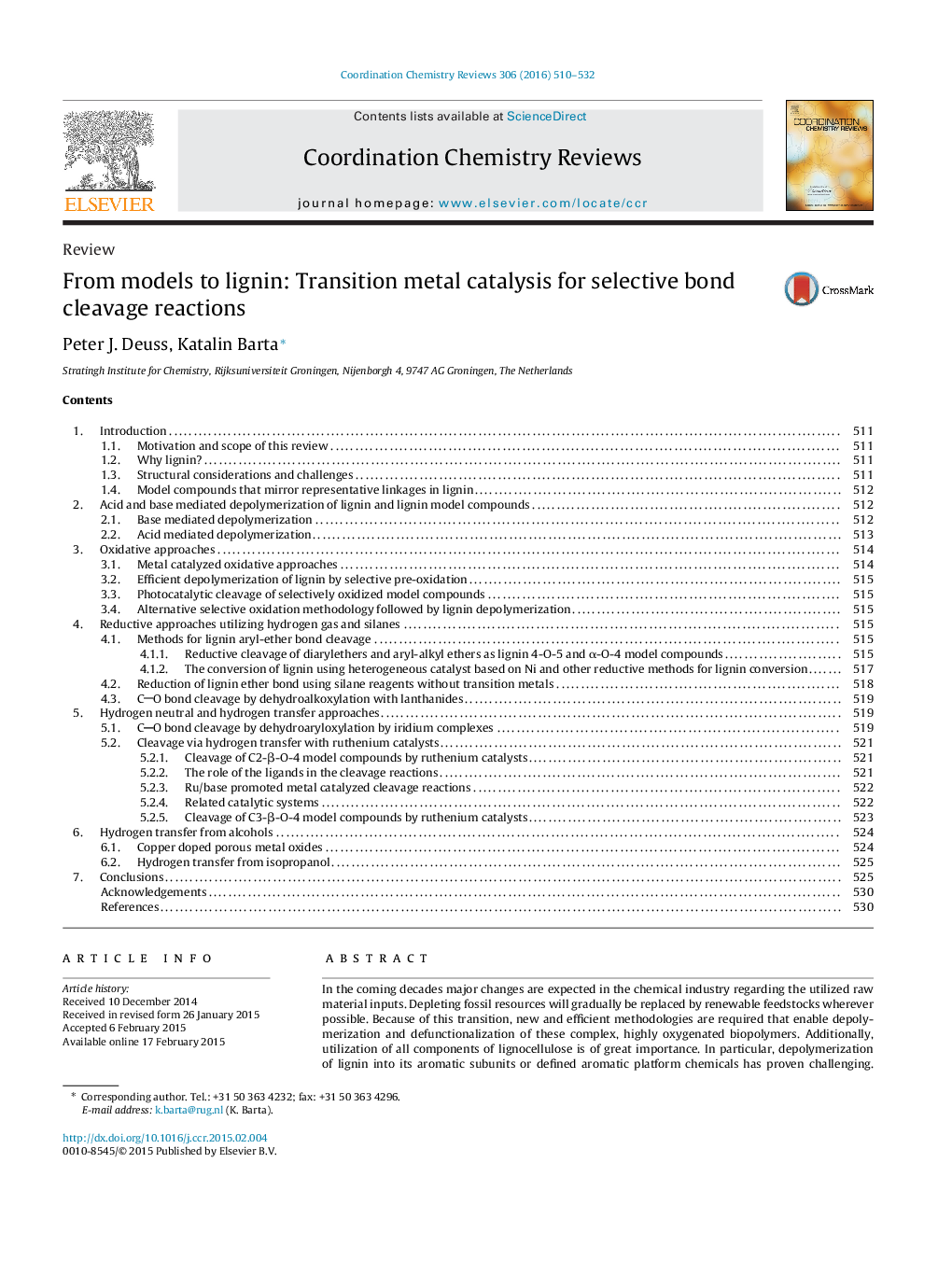| Article ID | Journal | Published Year | Pages | File Type |
|---|---|---|---|---|
| 1300875 | Coordination Chemistry Reviews | 2016 | 23 Pages |
•Summary of recent efforts in the selective catalytic depolymerization of lignin.•From detailed studies on model compound to actual applications.•Focus on progress of selective reductive and hydrogen neutral efforts.•Porous metal oxides as highly efficient catalyst for the conversion of lignin and lignocellulose.•Comparison of the different aromatic products that are accessible.
In the coming decades major changes are expected in the chemical industry regarding the utilized raw material inputs. Depleting fossil resources will gradually be replaced by renewable feedstocks wherever possible. Because of this transition, new and efficient methodologies are required that enable depolymerization and defunctionalization of these complex, highly oxygenated biopolymers. Additionally, utilization of all components of lignocellulose is of great importance. In particular, depolymerization of lignin into its aromatic subunits or defined aromatic platform chemicals has proven challenging. Various approaches to overcome these difficulties have been attempted and resulted in new and exciting developments in many fields. In this review we will give an overview of bond cleavage strategies relevant for lignin depolymerization using homogeneous catalysts, focusing especially on reductive and hydrogen transfer methods.
Graphical abstractFigure optionsDownload full-size imageDownload high-quality image (254 K)Download as PowerPoint slide
